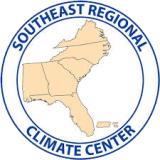Climate Conditions and Outlooks
- Record Atlantic hurricane season coming to a close.
- Record heat in 2020 for much of Florida, coastal Carolinas.
- Fall rainfall well above normal for most of the Southeast, heaviest over South Florida, Southern Appalachians, and the piedmont of North Carolina.
- Puerto Rico and U.S. Virgin Islands near normal for Fall rainfall and temperature.
- Pockets of D0 (abnormally dry) in South Georgia and Alabama, drought-free elsewhere in the Southeast.
- A La Niña advisory is in effect, 100% chance of continuing through winter.
- Looking ahead: CPC seasonal forecast favors above normal temperatures and below normal rainfall.
Current U.S. Drought Monitor map for the Southeast with data valid for December 1, 2020. The U.S. Drought Monitor (USDM) is updated each Thursday to show the location and intensity of drought across the country. Drought categories show experts’ assessments of conditions related to dryness and drought including observations of how much water is available in streams, lakes, and soils compared to usual for the same time of year.
There is no current drought in the Southeast and the U.S. Caribbean. A few pockets of abnormally dry conditions remain.
U.S. Drought Monitor Categories
Current U.S. Drought Monitor map for the Southeast with data valid for December 1, 2020. The U.S. Drought Monitor (USDM) is updated each Thursday to show the location and intensity of drought across the country. Drought categories show experts’ assessments of conditions related to dryness and drought including observations of how much water is available in streams, lakes, and soils compared to usual for the same time of year.
There is no current drought in the Southeast and the U.S. Caribbean. A few pockets of abnormally dry conditions remain.
Drought
- Drought: Pockets of D0 (abnormally dry) in South Georgia and Alabama, drought-free elsewhere in the Southeast.
- Looking ahead: Potential drought development in southern Alabama and Georgia, and Florida Panhandle.
Water Resources
- Streamflow: Streamflows remain above normal across the Carolinas and Florida and near normal for Georgia and Alabama.
- Looking ahead: Streamflow Forecast is more of the same for December trending to near normal across the entire Southeast by January and February.
 Agriculture Impact and Outlook
Agriculture Impact and Outlook
- Drier conditions have helped complete peanut harvest but have hindered establishment of winter grains and forage.
- Hurricane Eta brought rain and strong winds to parts of the Southeast, resulting in crop losses, tree damage and power outages.
- Tropical season is winding down, not much more expected
- Chill hours behind normal so far but recent cold is helping.
- Looking ahead: La Niña has potential to affect spring planting due to dry soil, warm winter could mean more pests next spring.

Spotlight: High Tide Flooding and Sea Level Rise
- High-tide flooding, often referred to as "nuisance" or “sunny day” flooding, is increasingly common due to years of relative sea level increases.
- As sea level rise continues, damaging floods that decades ago happened only during a storm now happen more regularly, such as during a full-moon tide or with a change in prevailing winds or currents.
- Record-breaking coastal flooding due to sea level rise is expected to continue into 2021 and beyond.
- Additional information on recent high tide flooding trends and outlooks for each tide station monitored by NOAA along the Southeast coast can be found here: https://tidesandcurrents.noaa.gov/HighTideFlooding_AnnualOutlook.html
What Happened: Southeast Temperature
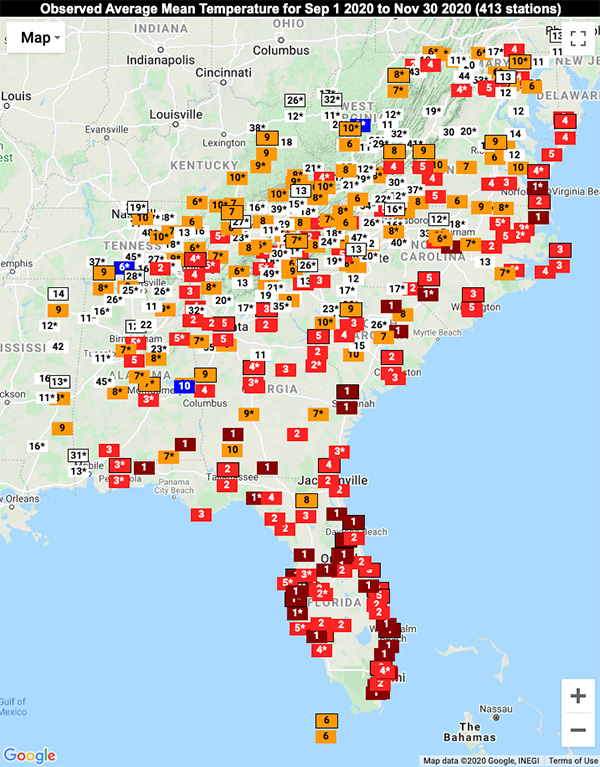
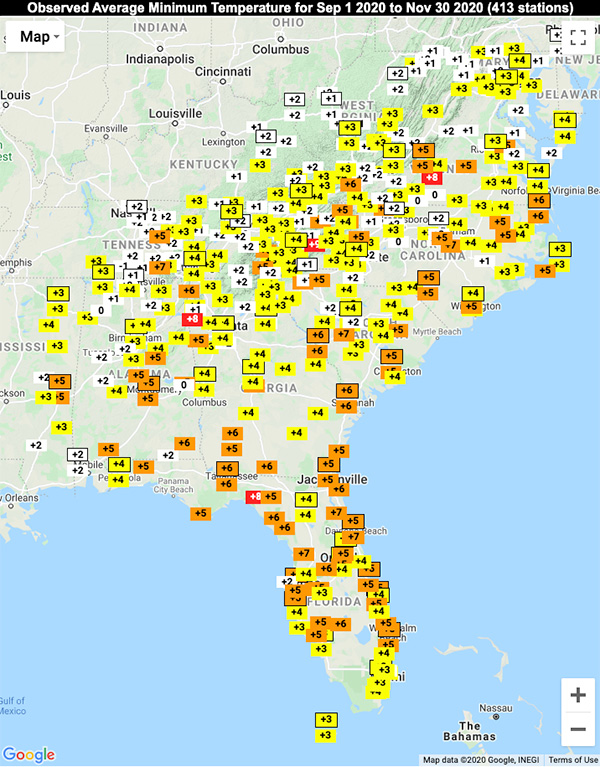
A look at (top) observed average mean temperature and (bottom) observed average minimum temperature across the Southeast between September and November. This fall saw record warm temperatures and nighttime warming temperatures across the Southeast. Source: Southeast Climate Perspectives, Southeast Regional Climate Center.
What Happened: Southeast Precipitation
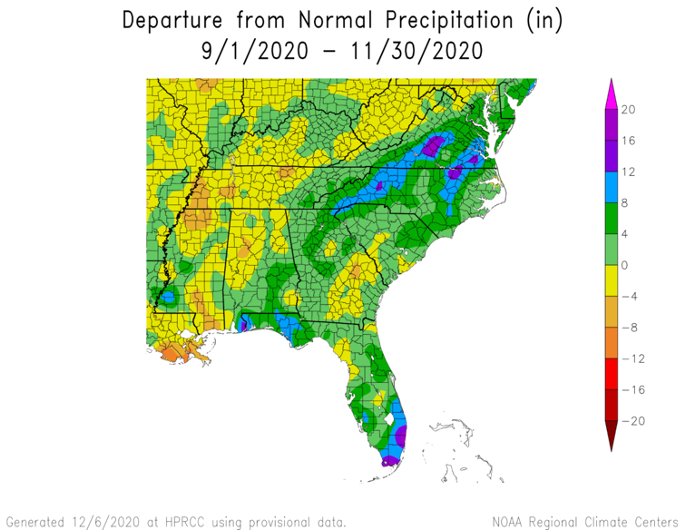
A look at precipitation departures from normal across the Southeast in October. Generated on December 6, 2020. Valid for September 1 - November 30, 2020. Source: High Plains RCC.
Current Conditions: River Flood Status
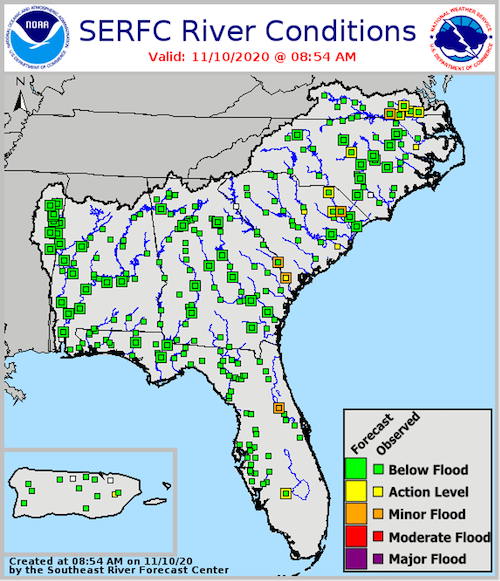
Looking Ahead: Streamflow Forecast
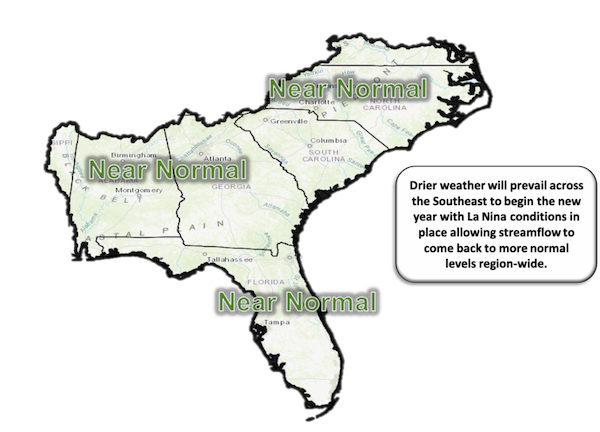
Streamflow Forecast is more of the same for December, trending to near normal across the entire Southeast by January and February (above). Source: NWS Southeast River Forecast Center.
Looking Ahead: Seasonal Outlooks
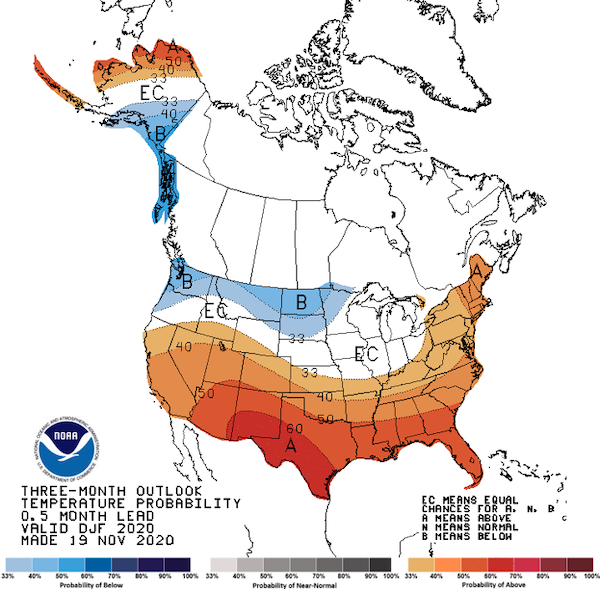
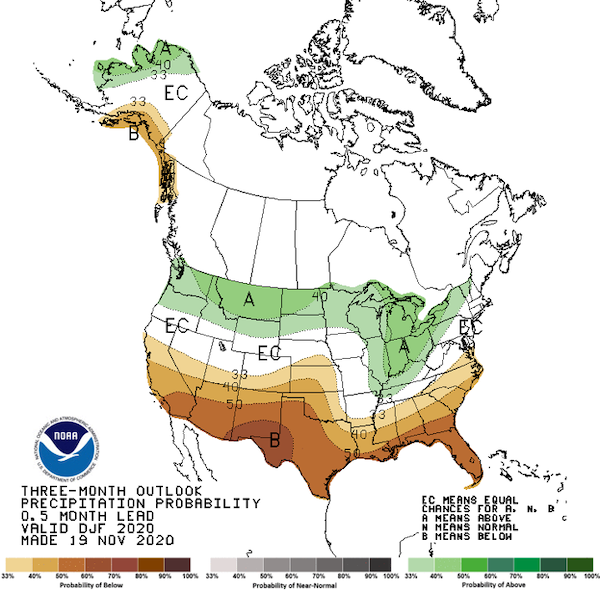
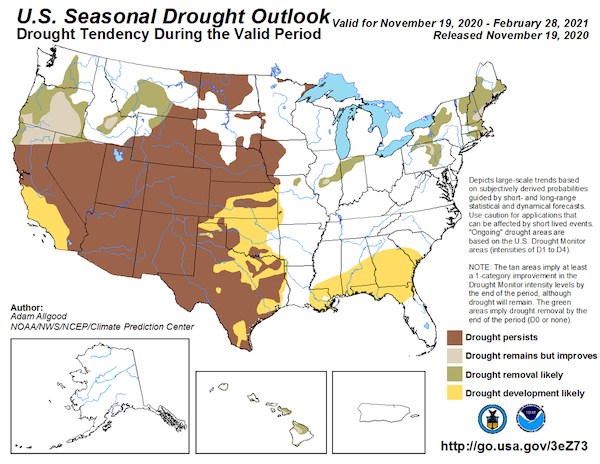
NOAA U.S. Seasonal Drought Outlook, Nov. 19 - Feb. 28. Source: NWS Climate Prediction Center.
Acknowledgments
Speakers
- David Zierden, Florida Climate Center
- Pam Knox, University of Georgia
- Jeff Dobur, NWS Southeast River Forecast Center
- William Sweet, NOAA National Ocean Service
Relevant Resources
Southeast Regional Climate Center (SERCC)
- September Southeast Monthly Climate Report
- Subscribe to monthly and quarterly climate reports
- SERCC Climate Perspectives Map
NWS Southeast River Forecast Center (SERFC)
Streamflow Monitoring & Forecasting
National Integrated Drought Information System (NIDIS) - U.S. Drought Portal
Climate and Agriculture in the Southeast - Blog
About These Webinars
The Southeast Climate monthly webinar series is held on the 2nd Tuesday of each month at 10:00 am ET. This series is hosted by the Southeast Regional Climate Center, in partnership with the National Integrated Drought Information System (NIDIS) and the NOAA National Weather Service. These webinars will provide the region with timely information on current and developing climate conditions such as drought, floods and tropical storms, as well as climatic events like El Niño and La Niña. Speakers may also discuss the impacts of these conditions on topics such as agriculture production, water resources, wildfires and ecosystems.
For webinar-related questions or suggestions, please contact: Meredith Muth, meredith.f.muth@noaa.gov




